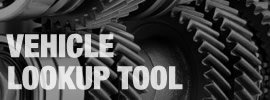While greasing seems simple, proper greasing requires a little forethought to help equipment perform well and last as long as possible. Here are four simple guidelines for greasing equipment. They’re based on industry-accepted practices and can help you reduce long-term maintenance and save money.
#1 Consolidation
A manufacturing plant, garage or other work site can have several types of grease lying around. Technicians may have access to a high-viscosity grease meant for stationary equipment or a molyfortified grease made for heavy-duty off-road equipment. Most techs keep a general-purpose grease on hand, too. Adding to the confusion, they may have the same grease in multiple NGLI grades. And the grease gun may not include any markings to indicate which grease is being used. This creates confusion and the potential for cross-contamination, especially since many people think “grease is grease.”
 |  |  |
In reality, there are several types of thickeners available on the market, such as lithium complex and polyurea. Some are compatible with each other; some are not. Cross-contamination between incompatible formulations can cause the grease to thin or thicken, which reduces wear protection. In some cases, the grease can separate, leaving the bearing, coupling or other component virtually unprotected. It’s just a matter of time before a breakdown.
To help avoid cross-contamination, survey each vehicle or piece of equipment and identify the type of grease it requires. If possible, indicate that information adjacent to the grease fitting. Once you know which greases the job site requires, eliminate unnecessary greases and consolidate inventory. This reduces potential problems and could save a little money, too.
#2 Standardize Grease Guns
Grease guns make greasing easy, but they can have different output volumes. One gun may produce a 3-cc shot of grease, while another produces a 2-cc shot. The same number of pumps of the grease-gun handle results in differing grease amounts. Inconsistent grease-gun displacement can result in over-greasing, which increases friction and heat, resulting in reduced performance and, ultimately, failure.

If you can’t find the displacement marked on the grease gun, displace 10 shots of grease into a clean container and divide the result by 10 to find the average displacement. Then mark that information on the grease gun.
It’s also a good idea to indicate somewhere near each fitting how many shots of grease are required. Again, this may not be possible in some cases, but you can easily create a schematic for reference. This helps standardize the maintenance process.
#3 Keep it Clean
Bearings are engineered with tight tolerances that leave no room for dirt particles and other debris. Once debris is introduced into the bearing cavity, it can circulate and scour the finely tuned surfaces, causing wear.
Always clean the grease fitting with a lint-free rag before and after greasing. This is a simple step – which makes it easy to overlook. Taking this precaution helps prevent introduction of wear-causing debris into the fitting.
#4 Exercise Restraint
Believe it or not, a grease gun is capable of producing pressures as high as 15,000 psi. This greatly exceeds the pressure most bearing seals are designed to withstand. Over-greasing can easily rupture seals, which leads to increased friction, heat and, eventually, maintenance and downtime.

Proper greasing requires little or no weight behind the grease-gun handle. As soon as backpressure is felt, stop greasing. It’s tempting to think adding a few extra shots of grease is beneficial, but it does more harm than good. Backpressure means the cavity is close to, or completely full, so stop greasing.
Check out our full line of synthetic greases. If you need help choosing the right grease, contact your independent AMSOIL Dealer


